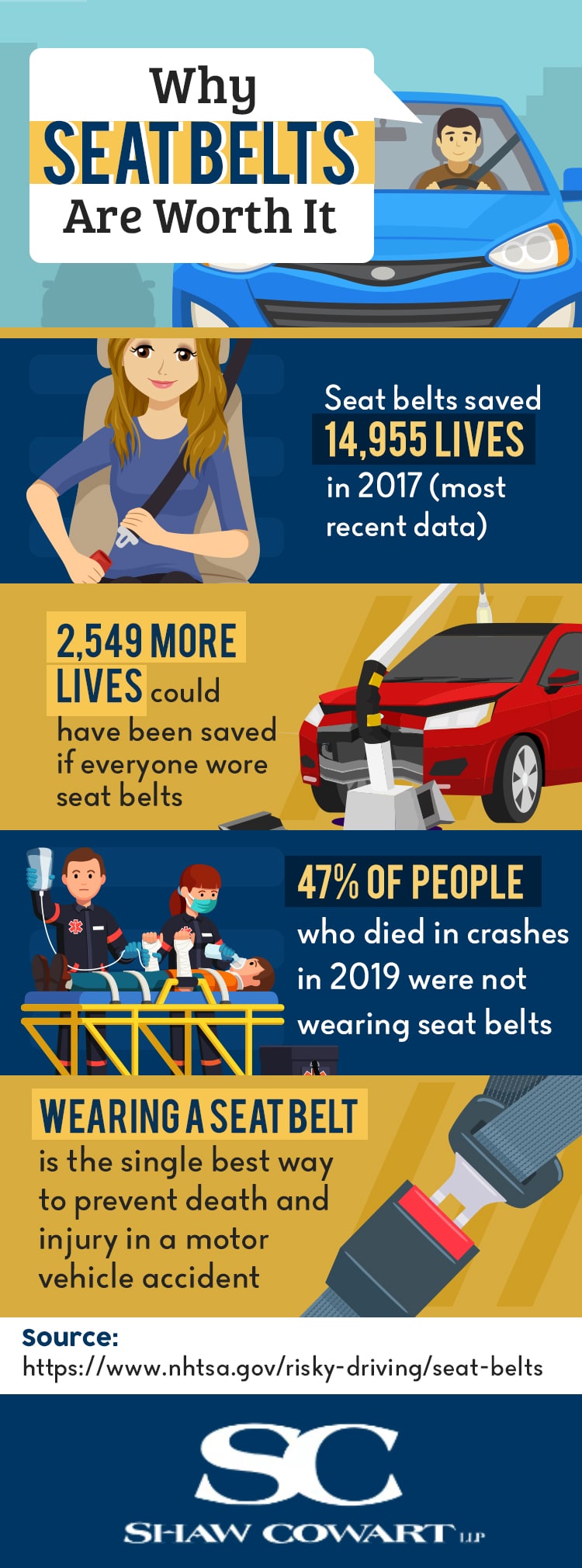 Using three points of contact, seat belts prevent the ejection of vehicle occupants in the event of a collision, rollover, or other type of motor vehicle crash. By restraining the person during an impact, seat belts also reduce the severity of injuries in many circumstances (source: National Highway Traffic Safety Administration).
Using three points of contact, seat belts prevent the ejection of vehicle occupants in the event of a collision, rollover, or other type of motor vehicle crash. By restraining the person during an impact, seat belts also reduce the severity of injuries in many circumstances (source: National Highway Traffic Safety Administration).
Seat belts are a relatively recent invention, and some people still wonder whether they are as essential as they’re cracked up to be. The first federal law mandating that new vehicles come equipped with seat belts wasn’t passed until 1968. Most states have seat belt laws at this point (except New Hampshire). And with good reason: The data backs up the efficacy of restraint use:
- For people in the front seat, seat belts reduce the risk of fatality by 45 percent and reduce the risk of severe injury by 50 percent (CDC)
- 3 out of 4 people ejected during a crash do not survive their injuries (CDC)
- Unrestrained motorists are 30 times more likely to be ejected in a crash (CDC)
- 47 percent of occupants killed in 2019 were unrestrained (NHTSA)
- Seat belt use could have saved another 2,549 lives in 2017 (NHTSA)
You must wear a seat belt and insist your passengers do as well, no matter how long or short the trip is. According to the NHTSA, airbags alone do not provide enough protection and can in fact lead to severe injuries themselves if the car occupant is not belted in. It’s also important to note that seat belts are effective when worn properly. Putting the shoulder strap behind your back or under your arm will not offer the same protection. Remember, always buckle up to prevent fatal injury in a crash.
Serious Injuries After an Accident
If you or a loved one is left with a life-altering physical injury following a car accident in our region, please call the experienced attorneys at Shaw Cowart, at 512-499-8900. We have many years of experience helping families like yours. We serve as trusted and skilled advocates who will help you get the full picture of your options for rebuilding your life following a crash.